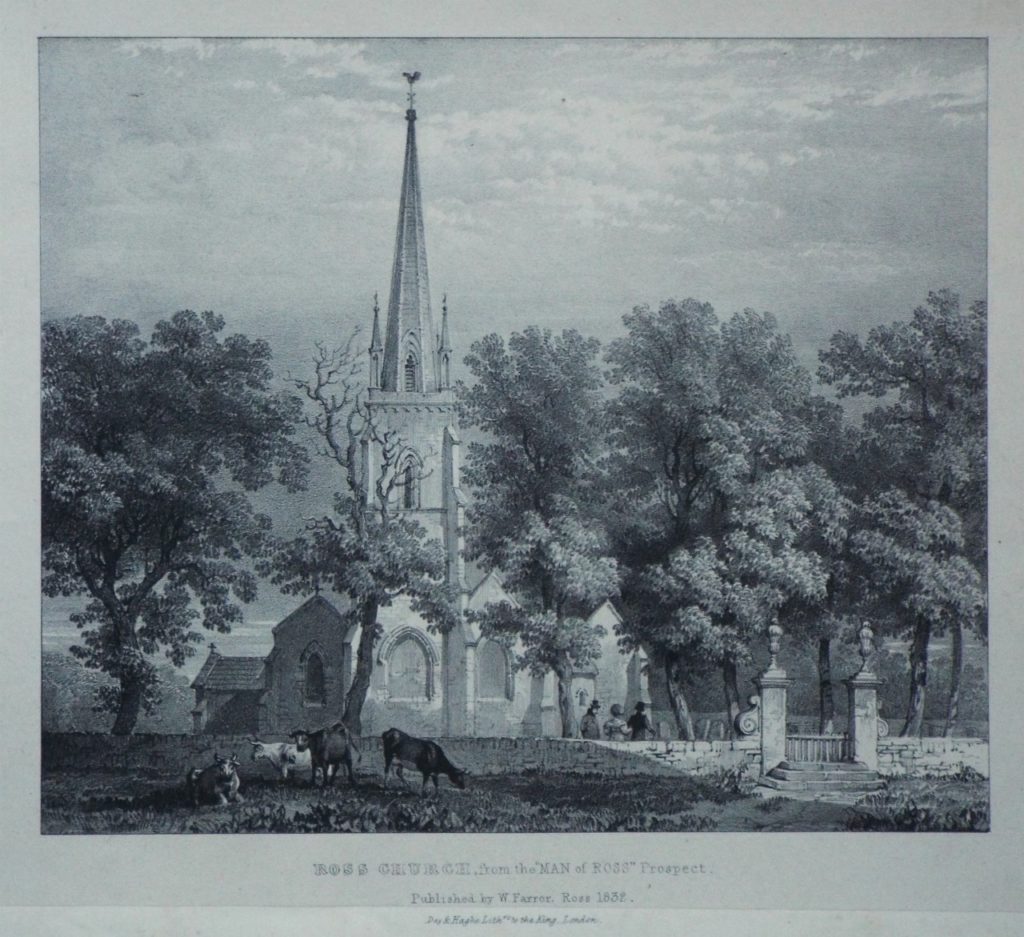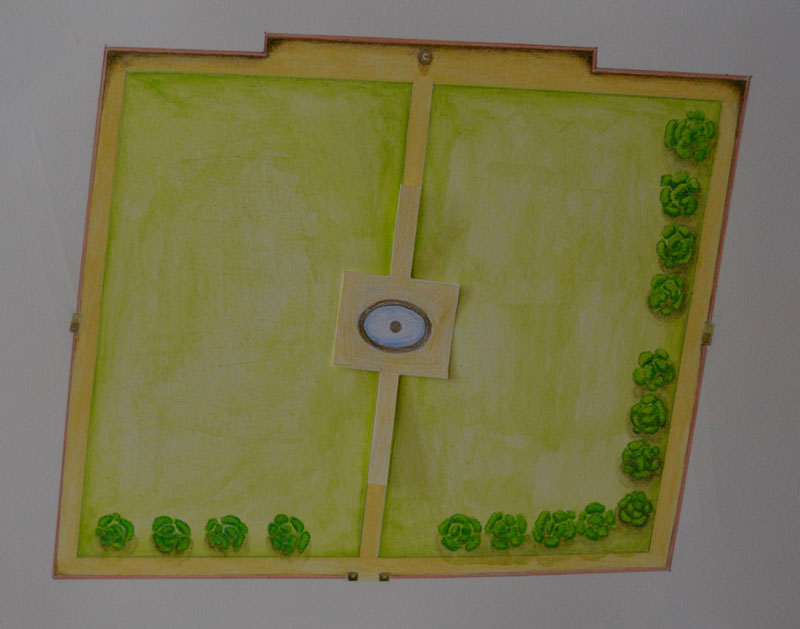The Prospect Garden was opened in 1700. It is thought to be one of the earliest free, public leisure gardens in England and was given to the people of Ross by John Kyrle, who leased the land in 1697. Originally almost twice its current size there is evidence to suggest it was laid out with grassed areas, paths, elm trees, a sundial and a central fountain, which also supplied river water to nearby houses. To the west was, and still is, the glorious and famous view of the Wye Valley and rolling countryside beyond towards Wales, in one direction, and the Malvern Hills, in the other.

On the north side was a pedimented stone gateway that mirrored the remaining one on the south side. It led down to The Pound Inn and the High Street. The stone pillars and urns on the current entrance in the east wall are also original, although engravings show steps down to the garden from this gateway, suggesting that the ground was originally lower – probably at the level of the landing below the steps inside the gateway to the south.

The wall dividing The Prospect from The Royal Hotel was built c1870. James Barrett, the builder of the hotel (1837), took part of The Prospect in the 1830s or 40s for the use of his guests and planted a laurel hedge to create a barrier between the two. The unhappy people of Ross rioted not once but twice at the loss of this land; ineffectively in 1848, and more productively in 1869, when Thomas Blake stepped in and bought the remaining section outright, giving it to the town’s people in perpetuity. The current layout and planting are most likely 19th century.

